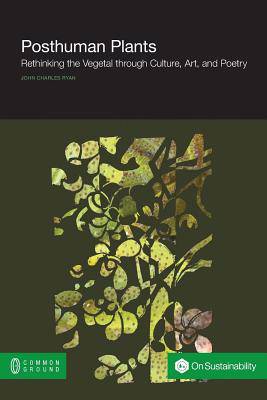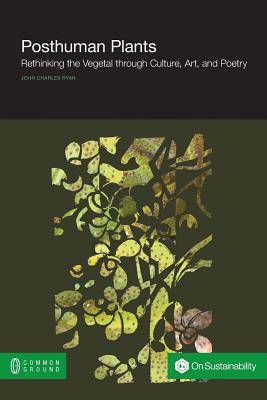
- Afhalen na 1 uur in een winkel met voorraad
- Gratis thuislevering in België vanaf € 30
- Ruim aanbod met 7 miljoen producten
- Afhalen na 1 uur in een winkel met voorraad
- Gratis thuislevering in België vanaf € 30
- Ruim aanbod met 7 miljoen producten
Zoeken
Posthuman Plants
Rethinking the Vegetal through Culture, Art, and Poetry
John Charles Ryan
Paperback | Engels
€ 76,45
+ 152 punten
Omschrijving
Our interdependence with plants entails symbiosis that is not only biological but also cultural, social, and linguistic. Posthuman Plants addresses our diverse entanglements with plants in everyday life through the prisms of posthumanist, multispecies, ecocritical, and ecocultural theory. This volume asks: how does the reconfiguration of human "being" as inherently permeable affect our perceptions of and relationships to plants-those "others" that have been regarded historically as passive elements of the landscape and constructed as the mute foils of animality? This book contributes to the ever-increasing debate about how we perceive plants and their influence on what it means to be human, more-than-human, and other-than-human. It argues that reconceptualizing the botanical world requires seeing, feeling, and understanding plants as intelligent, active, and sentient agents. Posthuman Plants is divided into five sections: Affect and Reciprocity, Heritage and Digitality, Art and Vegetality, Poetry and Vegetality, and Plants and the Senses. Although some of its content is strongly focused on the vegetal life of the southwest of Australia where the author resides, other countries, bioregions, places, and contexts figure into the analysis. The chapters are presented as essays on diverse subjects, all organized around the common strand of rethinking plants through culture, art, and poetry. In re-imagining the vegetal, Posthuman Plants draws from ethnographic, auto-ethnographic, historical, and literary sources and develops plant-based theoretical models that blur disciplinary boundaries. This broadly-ranging work will be of interest to international audiences, especially researchers in the fields of environmental studies and ecological humanities.
Specificaties
Betrokkenen
- Auteur(s):
- Uitgeverij:
Inhoud
- Aantal bladzijden:
- 242
- Taal:
- Engels
Eigenschappen
- Productcode (EAN):
- 9781612298221
- Verschijningsdatum:
- 30/10/2015
- Uitvoering:
- Paperback
- Formaat:
- Trade paperback (VS)
- Afmetingen:
- 156 mm x 234 mm
- Gewicht:
- 376 g

Alleen bij Standaard Boekhandel
+ 152 punten op je klantenkaart van Standaard Boekhandel
Beoordelingen
We publiceren alleen reviews die voldoen aan de voorwaarden voor reviews. Bekijk onze voorwaarden voor reviews.











